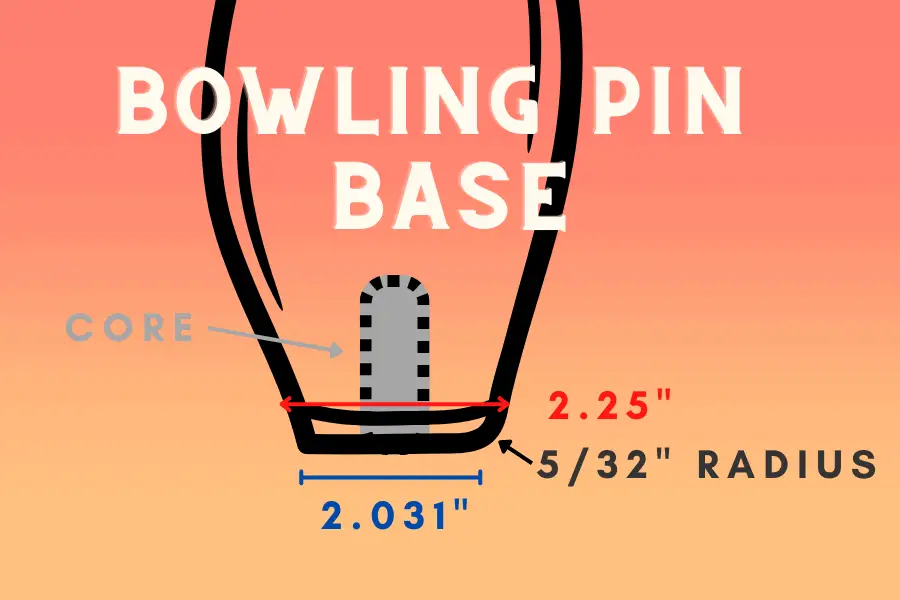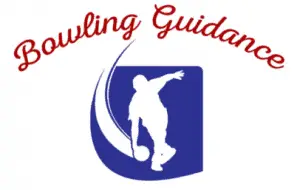
It’s likely that you have shopped for a bowling ball, tried on bowling shoes to get the perfect fit, and paid attention to the oil patterns in the lane. But have you ever considered the bowling pin?
Bowling pins are not to be taken for granted. A tenpin bowling pin must meet a series of precise specifications in order to be approved for regulation use.
If you think hard about it, the life of a bowling pin is quite tough. It stands up to fall back down while we, humans, fall down to stand back up.
The sole purpose of bowling pins is to fall down. They have to withstand repeated blows by the fast moving bowling bowl. Bowling pins must be durable. They must be manufactured so that they meet specifications for size, weight, and center of gravity, and coating thickness, among others. They are made in a way so that they can take the beating over and over.
Have you ever wondered what makes the bowling pins so strong? How much do bowling pins weigh? Let’s find out everything we can about bowling pins!
How much does Bowling Pin Weigh?
Bowling Pin Target Weight: 3 lbs, 8 ounces (1.59 kg)
Minimum: 3 lbs, 6 ounces. (1.53 kg)
Maximum: 3 lbs, 10 ounces. (1.64 kg)
Note: This is the specification for a the weight of a tenpin bowling pin, as set by the United States Bowling Congress (USBC).
A Look into Other Bowling Pin Specifications
Where is the Center of Gravity of a Bowling Pin?
The center of gravity of a ten pin bowling pin is at 5.781 inches ( 5 25/32″) with a minimum of 5.65 inches (5 5/8″) and a maximum of 5.937 inches (5 15/16″).
How Tall is a Bowling Pin?
The height of a bowling pin is 15 inches, with a tolerance of 0.031 inches. This means that the minimum height is 14.969″ and the maximum height is 15.031″.
What is the diameter of a Bowling Pin?
In addition to the diameter specifications at the base of the pin, there are 13 other diameter specifications along the length of the pin.
- At 4 1/2 inches above the base, the bowling pin is 4.766″ in diameter ± 0.031 inches.
- At 10 inches above the base, the diameter specification is 1.797″ ± 0.031 inches
What is the Base Diameter of a Bowling Pin?
The diameter of the base of a bowling pin is a little bit complicated. The diameter of the flat part, where the pin touches the ground is 2.031 inches (51.587 mm) ± 0.031″. The bottom edges of the pin are not sharp, however. They are rounded, with a 5/32″ radius. The diameter of the base at the top of the rounded area is 2.25″ ± 0.031″. There is a also a hole in the middle of the base that extends into the interior of the pin.

What are Bowling Pins Made From?
Traditionally, bowling pins are made of laminated maple wood, and then coated with polymer (plastic). This is what makes them so durable. However, they can also be made from synthetic materials, as long as the pins meet the USBC specifications.
Labels on Bowling Pins
Bowling pins are marked with the trade name from the manufacturer, a USBC certification mark, and other marks indicating the pin materials, coating, and weight, for example.
Who Manufactures Bowling Pins?
QubicaAMF
Headquartered in Mecahnicasville, Virginia, USA, the market leader in bowling pin manufacturing is QubicaAMF.
Brunswick
Brunswick is also a worldwide leader in bowling pin manufacturing, with headquarters in Muskegon, MI. One of the characteristics of their pins in the durable Surlyn coating.
Winsome
Winsome is a Taiwanese manufacturer of bowling pins. Their pins are USBC approved and are marked with a distinctive maple leaf.
So, that is the secret behind the strength of the bowling pins. Now, let’s talk about the shape and size. The pins have a unique shape, a wide bottom that tapers to a narrow neck with a rounded top. This is the ideal shape to give the pins balance. Furthermore, it makes it easier for the machine to arrange them back after they fall down.
Who Sets Bowling Pin Specifications?
Tenpin bowling pin specifications are set by the United States Bowling Congress, abbreviated as USBC. The USBC was formed in 2005 when the American Bowling Congress (ABC), Women’s International Bowling Congress (WIBC), Young American Bowling Alliance (YABA), and USA Bowling joined together.
Types of Bowling Pins
There are a wide variety of bowling pins available, not just the current regulation tenpins. Shorter, wider pins are used for duckpin bowling, and tall, cylindrical pins are used in candlepin bowling.
In addition, there are specialty pins that are used as gifts and trophies.
Finally, there is a thriving market for collecting old regulation bowling pins. These pins make excellent decorations in game rooms and sports bars. Some examples of notable bowling pins:
Vulcan Vultex 2
This pin was made by the now defunct Vulcan corporation. Brunswick took over the Vulcan, and the Vultex pins are longer made.
Brunswick PBA Gold Pin
Popular with collectors, the Brunswick PBA gold pins were first introduced in 1998 for the Pro Bowlers Association (PBA). They have distinctive gold color and are heavier than standard tenpins.
Bowling Pin Manufacturing Video – Official Qubica AMF Video
In this official video by Quibica AMF, you can see all the steps that go into bowling pin manufacturing. The process gets started at 0:33.
Knocking Down the Pins – How to aim in bowling
When you finally learn how to hold and throw a bowling ball, you have to focus on throwing it where you want to throw it. In other words, you have to aim your ball to knock down the pins.
Perhaps you think that all you have to do is aim your ball just by looking at the pins and then throwing the ball. Most people do, so no worries. However, that is not really the best approach, and when people use this technique, most people tend to miss their target.
Let’s find out what you should aim at instead
1. Pin Bowling
There is a term in bowling called pin bowling and it has more to do with aiming than you could ever imagine. If you look at the pin to aim, then you are pin bowling. While it can work at times, it is not the best method.
The pins are at least 60 feet away from you and that is quite a long way to be aiming your ball from. As a beginner, it is tempting to look only at the pins and then aim. But, it is best if you resist the temptation to do this, and don’t form a bad habit.
2. Spot Bowling
This is the aiming approach we will be focusing on and it is far more effective than the pin bowling approach. If you look closely at the bowling lane, you will find lines or dots painted in the lane. You will find dots in the center of the lane that lead right to the number one pin- which is at the front and center of all the other pins.
In the spot bowling approach, you focus on these lines that are closer to you rather than the pins that are so far away from you. Since the lines are closer, you can be more accurate since it is easier to aim for a closer target than to try to hit a target that is farther away.
A few more considerations
You could just aim at the centerline to score a strike but in all honesty, that just would not be enough. This is because there are quite a number of other factors to consider when you are aiming. And, these factors are:
Your Bowling Style:
Do you always throw a straight ball or do you hook your ball often? Does your ball always go where you intend it to go? Consider these after practicing and evaluating your ball path.
Because in most cases the ball does not go straight. If you are a right-handed player, it is best to aim in the pocket between the 1 and 3 number bowling pins. On the other hand, if you are a left-handed player it is best to aim in the pocket between the one and two number pins
So, you are staying quite close to your target. If your ball does curve a bit, it is alright to aim at either side of the centerline but not the centerline. Because your ball will most likely not move in a straight line.
The Lane Conditions
If you bowl often, you will come to know the terms heavily oiled or dry lane. When the lane is heavily oiled, the ball will behave differently than when the lane is dry. In moderately oiled lanes, the ball will behave differently still.
You see, the level of oil in the lane will play a huge role in how much control you have over the ball. Thus, it plays a huge role in how you aim your ball as well. In some lanes, the ball will move faster along the right and left side than it does along the center. In others, it may move differently in the back end while it has a different path along the middle.
So, consider these and be flexible in your approach. It is good to know your standard aiming style but to be a better bowler, you need to be able to adapt to the various conditions as well. The professionals do not play in the same lane for very long.
They face new conditions more often than we can imagine and they take their time to find out how to change their aiming and deliver the ball to get the best results in the lane they are bowling on.
So, the key is to observe and adjust. Know what to do when situations change.
Summary
Bowling pins are not as simple as they look and they have strict requirements just like bowling ball dimensions. Quite a lot of effort goes into the build and design of bowling pins.
FAQ’s
It is hard to answer this question about new pins, because bowling pins are sold business to business (B2B). You need to set up and be approved for an account for the manufacturer.
Used bowling pins, however, are easy to find, and you can get them for under ten dollars and the prices go up from there.

